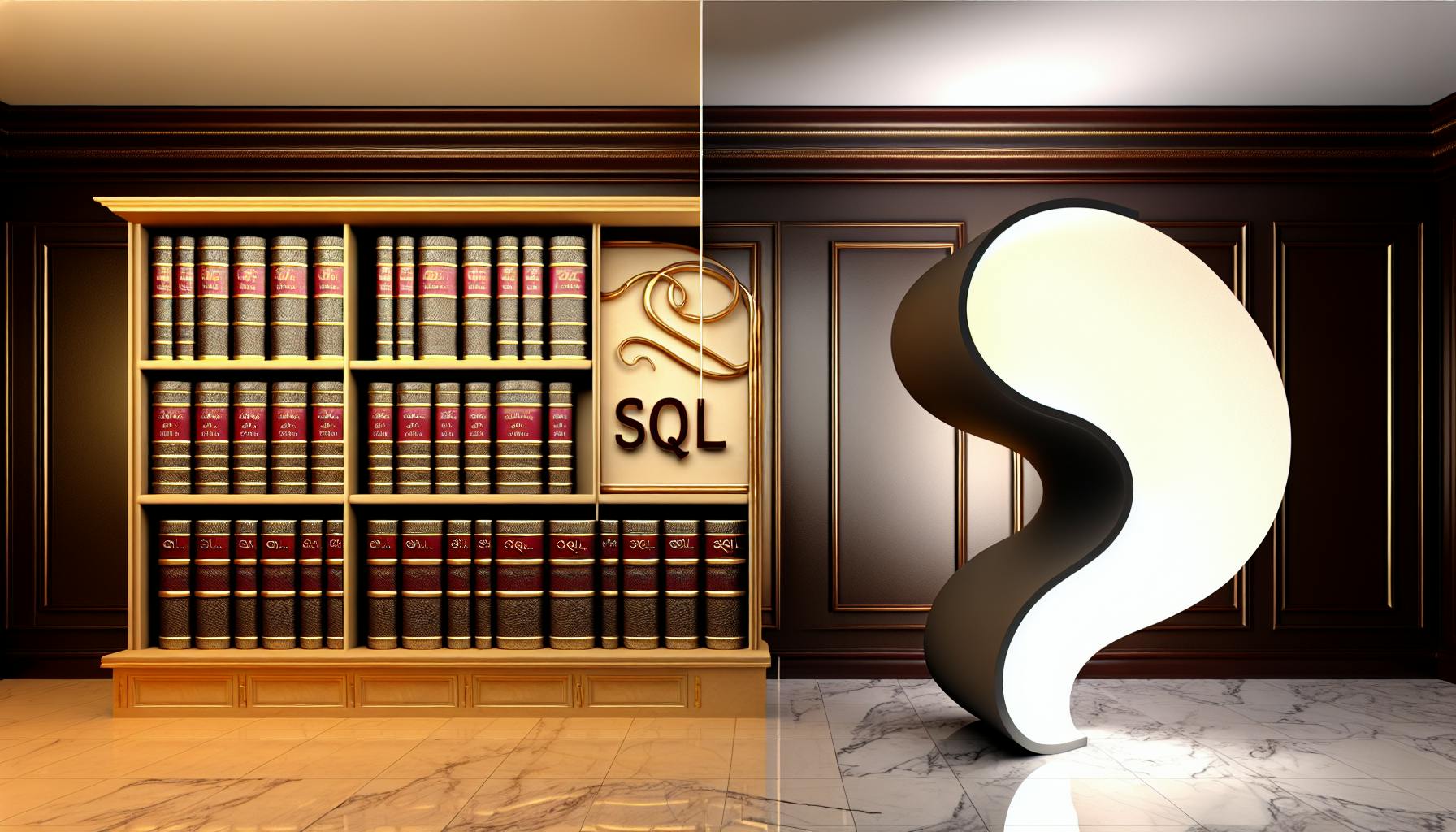We can all agree that statistical inference is essential yet complex in data science.
Bayesian inference provides a robust framework for reasoning about uncertainty that has become indispensable in modern data analysis.
This comprehensive guide will walk through key concepts like prior probabilities, likelihood functions, Bayes' theorem, and posterior inference. You'll gain intuition for how Bayesian methods work, compare them to frequentist approaches, see use cases in A/B testing, predictive modeling, and more, while also learning common misconceptions.
Introduction to Bayesian Inference in Data Science
Bayesian inference is a powerful statistical method that allows data scientists to update the probability of a hypothesis as more evidence or data becomes available. It works by using Bayes' theorem to combine prior beliefs about a hypothesis with observed data to arrive at updated beliefs.
Some key things to know about Bayesian inference:
-
It incorporates prior beliefs into analysis. This allows data scientists to leverage existing domain knowledge when making inferences from data.
-
As more data comes in, it updates beliefs. So you start with initial assumptions, observe some data, update your beliefs a little bit, observe some more data, update more, etc. until you hone in on the true underlying patterns.
-
It outputs probability distributions. Frequentist methods output single point estimates, while Bayesian methods provide full probability distributions over possible parameter values. This better captures uncertainty.
-
Computational techniques like Markov Chain Monte Carlo make it possible to approximate Bayesian analyses that would otherwise be intractable. This expands the types of models and data where Bayesian inference can be applied.
-
Bayesian methods are very flexible and have become popular for A/B testing, time series forecasting, classification, and other common data science tasks.
So in summary, Bayesian inference is a very useful technique for modeling uncertainty and updating understanding in light of new evidence. It leverages prior information alongside observed data in a principled probabilistic framework. As computational power has increased, adoption of Bayesian methods has grown rapidly in data science and machine learning.
Key Components of Bayesian Analysis
Bayesian analysis involves updating beliefs about a hypothesis as new evidence becomes available. The key components that enable this probabilistic inference are:
Prior Probabilities: Foundation of Bayesian Inference
The prior probability represents the initial belief about a hypothesis before observing any evidence. It is based on previous knowledge and serves as the starting point of Bayesian inference.
For example, a prior could be formulated from:
- Past data and research on the hypothesis
- Expert domain knowledge
- Logical constraints on the hypothesis
The choice of prior can significantly impact conclusions. Priors should incorporate existing knowledge where possible.
Likelihood Function: Measuring Evidence
The likelihood function measures how well the observed data supports the hypothesis, given a set of model parameters. It evaluates the probability of the evidence under different parameter values.
The likelihood updates the prior probability to reflect the newly observed data.
Posterior Probability: Bayesian Inference Explained
The posterior probability represents the updated belief after combining the prior probability with the likelihood from the new evidence.
The posterior encapsulates the concept of learning in Bayesian inference - updating what is known about a hypothesis as new relevant evidence becomes available.
Normalization Constant: Scaling the Posterior
Since probability distributions must sum to one, a normalization constant rescales the posterior distribution. This ensures the posterior constitutes a proper probability density function.
The constant serves a mathematical role in Bayesian calculations.
In summary, Bayesian analysis leverages these four components to formally update beliefs in light of new evidence within a probabilistic framework. It provides a mathematically grounded approach to learning.
Bayes' Theorem and Posterior Inference
Bayes' theorem provides the mathematical framework for Bayesian inference. It allows us to calculate the posterior probability distribution - the updated belief about a hypothesis after accounting for observed data.
Calculating Posterior Probabilities
Bayes' theorem states that the posterior probability is proportional to the prior probability multiplied by the likelihood. Mathematically:
posterior ∝ prior x likelihood
The prior represents our initial belief in a hypothesis before observing any data. The likelihood quantifies how well a hypothesis predicts or explains the observed data. The posterior probability then updates our belief after seeing the data.
By using Bayes' theorem, we formally update our knowledge as new data becomes available. This allows learning in an incremental and iterative manner.
Estimating Posterior Distributions
In complex Bayesian models, directly calculating the posterior is often intractable. Instead, we use computational methods like Markov Chain Monte Carlo (MCMC) to generate samples that approximate the posterior distribution.
Popular MCMC algorithms include:
- Metropolis-Hastings
- Gibbs sampling
- Hamiltonian Monte Carlo
These algorithms allow estimating posterior distributions for models with thousands of parameters. They underpin modern Bayesian machine learning techniques.
Bayesian Inference Example Problems
Here is a simple example of applying Bayes' theorem:
-
Prior belief of rain tomorrow is 20%
-
Weather forecast predicts 80% chance of rain
-
Historical weather forecasts have 65% accuracy
-
Prior probability of rain = 0.2
-
Likelihood (accuracy) = 0.65
-
Posterior probability = 0.2 x 0.65 / (0.2 x 0.65 + 0.8 x 0.35) = 0.39
So accounting for the imperfect weather forecast, our posterior belief of rain tomorrow is 39% after seeing the forecast data.
Bayesian inference allows mathematically updating beliefs in light of new evidence. It is a pillar of modern data analysis and machine learning.
sbb-itb-ceaa4ed
Bayesian vs Frequentist Approach in Statistical Analysis
The Bayesian and frequentist approaches represent two major schools of thought in statistical analysis and data science. While both aim to quantify uncertainty, they have fundamentally different philosophies and interpretations of probability:
Bayesian Approach
- Probability represents a degree of belief that updates as new information becomes available
- Allows for incorporating prior information or beliefs into analysis
- Results in a full probability distribution over possible outcomes
- Well-suited for small or incomplete datasets
- Allows for intuitive and natural handling of uncertainty
Frequentist Approach
- Probability represents long-run frequency of random events
- Does not utilize prior information or beliefs
- Focuses on data likelihood rather than full distribution
- Requires large datasets to make inferences
- Can struggle with quantifying uncertainty
The Bayesian approach has become popular in many data science applications because it:
- Allows for elegant handling of uncertainty in predictions
- Provides entire distribution instead of single estimates
- Easily incorporates new information to update beliefs
- Allows for intuitive interpretation and communication of results
However, frequentist methods tend to be simpler computationally and can perform well with very large datasets. The two approaches ultimately answer different questions and can even complement each other in some analyses. Understanding these philosophical differences is key to selecting the right approach for a given data science problem.
Applications of Bayesian Methods in Data Science
Bayesian inference is a powerful statistical analysis technique used across industries to make better decisions under uncertainty. Here are some real-world examples of how Bayesian methods are applied in data science:
A/B Testing with Bayesian Inference
A/B testing is a popular way to test changes to web pages, ads, emails, etc. Bayesian A/B testing incorporates historical data and learnings as priors. This allows faster decision making with less traffic, optimizing spend.
For example, an e-commerce site may test a new checkout flow against the old flow. The Bayesian approach would set an informative prior based on previous AB tests of the checkout process. As new data comes in, the posterior update would determine if there is enough evidence to make a decision faster.
Predictive Modeling and Bayesian Regression
Predictive modeling makes forecasts about unknown future observations. Bayesian models like Bayesian regression and naive Bayes classification make predictions that combine new evidence with prior knowledge.
Marketing analysts could build a Bayesian regression model to predict product demand based on past sales data and macroeconomic factors. As new sales data comes in, the model makes dynamic forecasts that become more precise over time.
Bayesian Inference in Financial Modeling
Bayesian methods help assess risks and make decisions under uncertainty across finance. Portfolio managers can set priors based on historical return patterns. As asset prices change, Bayesian analysis gives updated return forecasts and volatility estimates to guide trades.
Central banks also use Bayesian models to forecast economic conditions. The models combine historical data with economist expertise to predict growth, inflation, unemployment rates, and guide monetary policy.
Epidemiological Studies and Bayesian Analysis
Public health policy relies heavily on understanding disease spread. Bayesian inference improves predictions and understanding of epidemiological models using scarce data.
For example, the onset of new viruses like H1N1, Ebola, and COVID-19 requires estimation of the reproduction number R even with little information. Bayesian models set informed priors around past epidemics to quickly estimate R, aiding control policy.
Common Misconceptions and Challenges in Bayesian Inference
Bayesian inference is a powerful statistical analysis method, but it comes with some common misconceptions and practical challenges. Here are a few key points to understand:
Misconception: Bayesian Methods are Always Subjective
While specifying informative priors can introduce subjectivity, there are ways to define objective or non-informative priors. So Bayesian analysis does not have to be subjective if the priors are selected carefully.
Challenge: Specifying Appropriate Priors
Choosing suitable priors is crucial but can be difficult, especially for those new to Bayesian techniques. Using domain expertise, similar past analyses, or objective priors like Jeffreys priors can help guide appropriate prior selection.
Challenge: Computational Complexity
Bayesian models with multiple parameters can get complex fast. Advances in Markov chain Monte Carlo (MCMC) sampling have eased this, but model simplicity should still be valued where possible.
Misconception: Frequentist and Bayesian Statistics are Incompatible
While differing philosophically, the two schools of thought answer related questions with similar goals. Bayesian estimates even converge to frequentist values given enough data. The methods offer complementary strengths.
By clarifying common Bayesian challenges like appropriate priors and complexity along with misconceptions about subjectivity and incompatibility, professionals new to Bayesian techniques can apply them more readily. With thoughtful use, Bayesian inference is an invaluable analysis approach across industries.
Conclusion and Key Takeaways on Bayesian Inference in Data Science
Bayesian inference provides a powerful set of techniques for data analysis that complement frequentist methods. Here are some key takeaways:
-
Bayesian inference allows you to incorporate prior beliefs and update them as new data becomes available. This can be useful when you have domain expertise to build on.
-
Bayesian methods provide full probability distributions over parameters, allowing you to quantify uncertainty. This leads to intuitive and natural interpretations.
-
However, Bayesian analysis requires defining prior distributions, which can be subjective. It's important to assess sensitivity to the choice of priors.
-
Bayesian inference tends to perform better with small datasets, while frequentist methods work better with large datasets.
-
Bayesian techniques excel at handling missing data and hierarchical models. They are also very flexible for modeling complex data.
-
Markov Chain Monte Carlo (MCMC) sampling methods enable fitting complex Bayesian models that would be intractable analytically.
-
Overall, Bayesian and frequentist methods complement each other. Applying both techniques provides a comprehensive analysis that minimizes limitations.
In summary, Bayesian inference is a versatile addition to the data science toolkit. Mastering Bayesian methods, like MCMC and hierarchical models, should be part of any aspiring data scientist's education.


